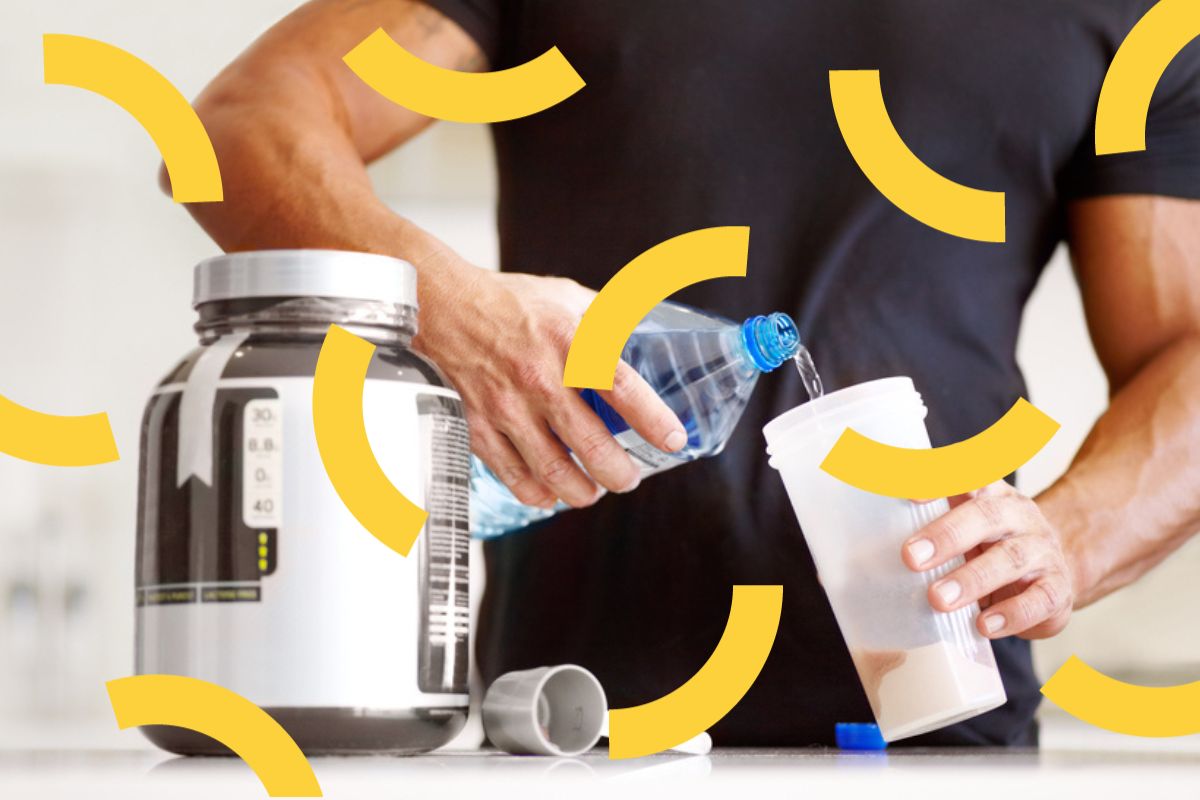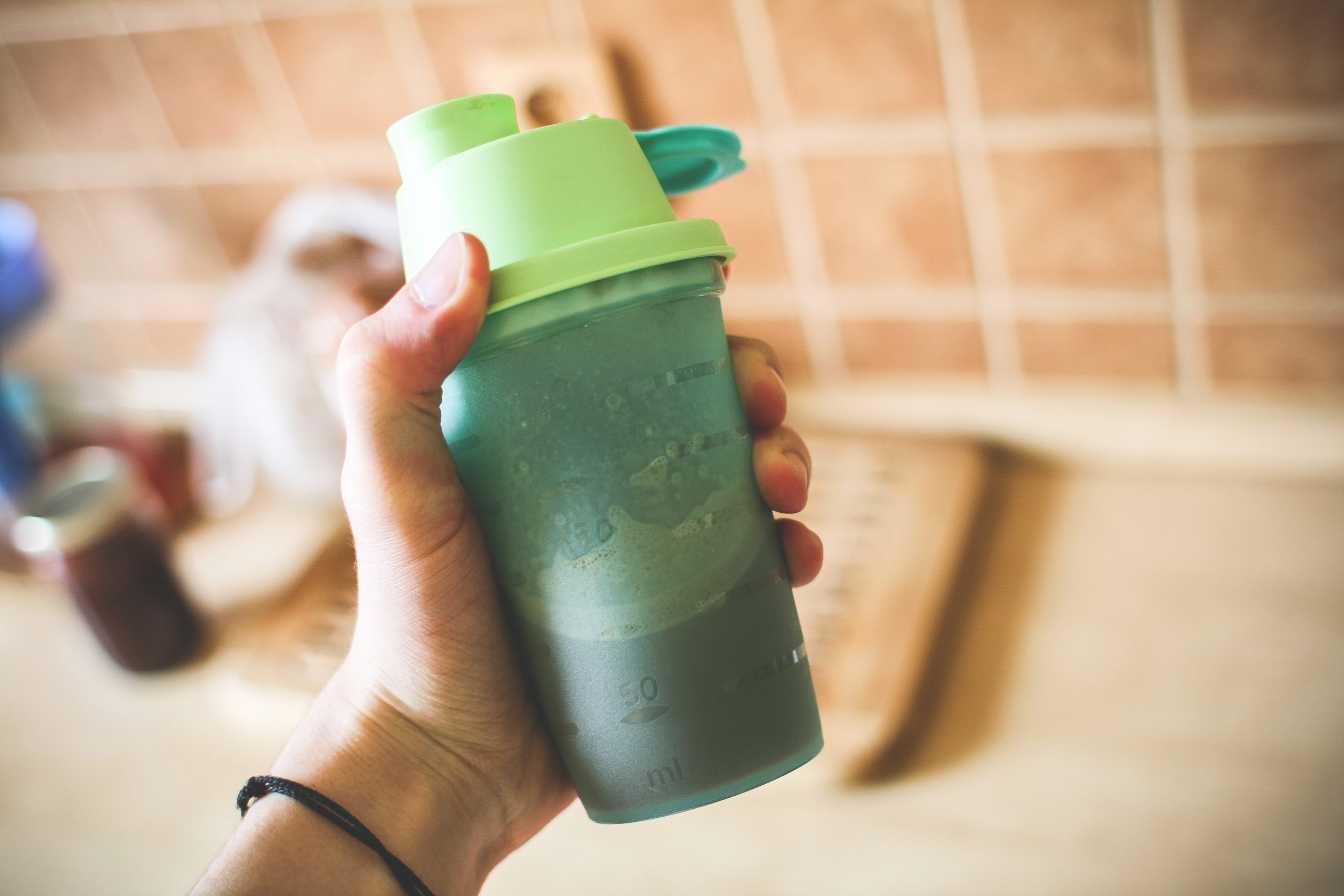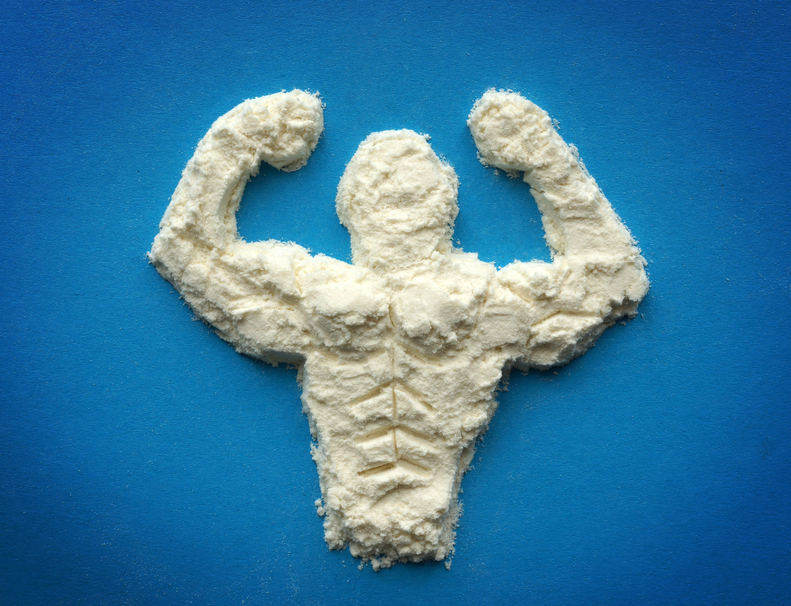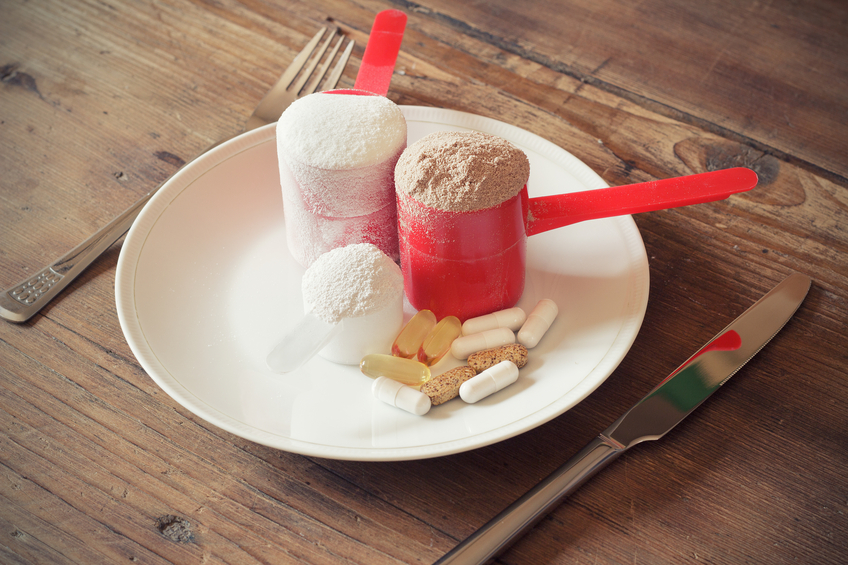However, the type and amount of protein you need are subject to some debate. This guide will walk you through the various forms of protein supplements commonly available and will help you decide how much your clients (or yourself) should be consuming based on fitness goals.
Before we dive in, keep in mind that whole foods are the best source of protein. Most of your clients will be able to meet their needs by consuming protein-dense foods such as meats, fish, soybeans, or lupin beans. Protein supplements are meant to do just that: supplement the diet when necessary.
Animal-Based Protein Powders
Milk, whey, casein, egg, and beef proteins are all animal-based. Milk protein is 80% casein and 20% whey. Whey is the cheapest protein and by far the most popular. Whey comes in three forms: isolate, concentrate, and hydrolysate. All three form have excellent amino acid profiles, the building blocks of protein, and are rich in the amino acid leucine, which helps signal the body to turn on muscle growth.
Whey isolate (about 90% protein) is similar to whey concentrate (about 80% protein). As for whey hydrolysate, it has been “pre-digested” (broken down into its individual amino acids), thus acquiring a bitter taste and a very rapid digestion speed. Whey hydrolysate can be a good option for clients with digestive issues or a compromised immune system.
Casein also comes in three forms: calcium caseinate (the standard form), micellar casein (a concentrated form), and hydrolyzed casein (the rapidly digesting form). Calcium caseinate and micellar casein have gel-like properties that are great for making thick shakes. Hydrolyzed casein does not have this property and is water soluble.
As protein powders, milk, beef, and egg don’t offer any clear advantage over the usually less expensive and more easily available whey and casein.
Plant-Based Protein Supplements
Soy, hemp, pea and rice are popular options. Soy comes in two forms: concentrate and isolate. Much has been made in past years of the estrogenic isoflavone content in soy protein powders, but unless you plan on consuming over 200 grams every single day you have little to worry about.
A 70:30 pea:rice protein powder blend can boast an amino acid profile very similar to that of whey, the gold standard. As for hemp protein powder, it is usually only half protein, the rest being fiber and fat (mostly polyunsaturated fatty acids like omega-3 and omega-6).
Setting Your Client’s Protein Intake
The ideal protein intake varies according to training goals, weight, and age. We will cover four scenarios you may encounter with your clients. Keep in mind that for all scenarios, protein intake should be fairly evenly distributed between meals.
Clients Who Want to Lose Weight
There are three benefits to an adequate protein intake during periods of caloric restriction:
1. Protein makes you feel full longer than do carbohydrate or fat. However, combining all three macronutrients can produce even greater feelings of fullness.
2.Digesting protein burns more calories than does digesting carbohydrate or fat.
3.Your body is not very good at converting protein into fat. Protein will preferentially be used to help maintain your hard-earned muscles and other lean tissues.
Set these clients’ protein intake to 1.0–2.2 g/kg/day (0.45–1.00 g/lb/day). If they plan to lose fat rapidly, set their intake in the higher half of this range. In any case, if they have a lot of fat to lose, base their protein intake on their goal bodyweight to help prevent overeating.
Clients Who Want to Build Muscle
New trainees as well as clients who have been training for years will need to consume 1.0–2.0 g/kg/day (0.45–0.91 g/lb/day). Clients who are striving to make large muscle gains, have been consistently training for over a year, or are over the age of 40 should set their intake in the higher half of this range. In addition to protein, make sure your clients are consuming enough total calories to support muscle growth.
Clients Who Are Athletes
Those of your clients who regularly participate in sporting events should get 1.2–2.0 g/kg/day (0.54–0.91 g/lb/day). Strength athletes and athletes who play sports of high or variable intensity (football, soccer, volleyball …) should get 1.4–2.0 g/kg/day (0.64–0.91 g/lb/day). Endurance athletes such as marathon runners should get 1.2–1.7 g/kg/day (0.54–0.77 g/lb/day). Finally, skill-based athletes such as curlers should get around 1.2 g/kg/day (0.54 g/lb/day).
Clients Who Are Seniors
As we age, we naturally lose muscle mass. This loss can be attenuated by resistance training and an increase in protein intake. For seniors in good health, 1.0–1.2 g/kg/day (0.45–0.54 g/lb/day) is suggested. While sick or recovering from an injury or operation, consider a slightly higher intake: 1.2–1.5 g/kg/day (0.54–0.68 g/lb/day).
Training Starts in the Kitchen
The modern trainer knows that, whatever the health goal may be, exercising is only half the battle—the other half is waged in the kitchen. Whether your clients are athletes or seniors, whether they’re trying to gain muscle or shed fat, this article will help you make sure their protein intake doesn’t hinder their efforts but rather supports them.





